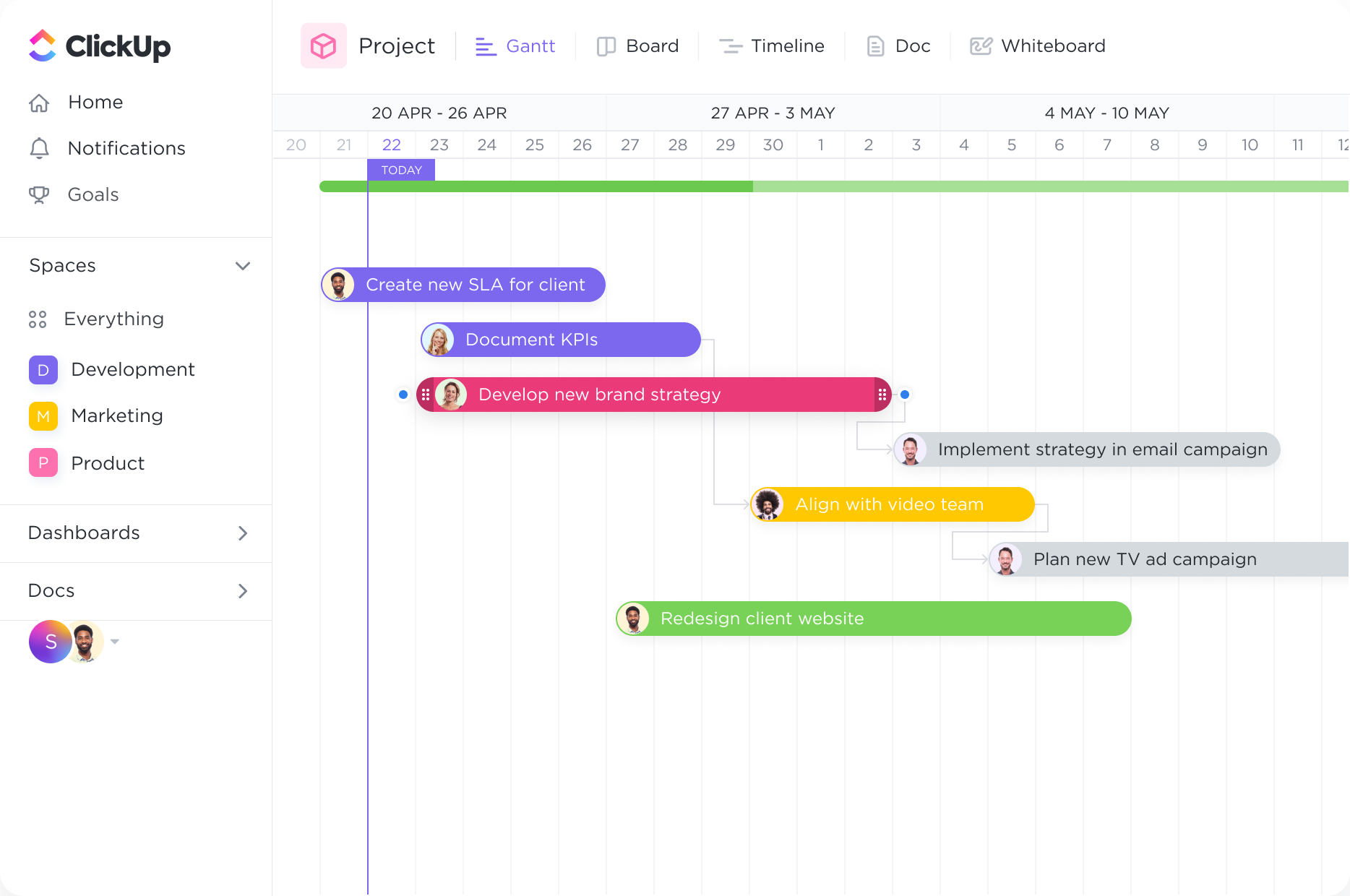Stay ahead of every deadline.
With the Gantt chart's dynamic timeline, you can easily schedule tasks, keep up with project progress, manage deadlines, and handle bottlenecks.
Streamline your editing workflow with ClickUp's powerful Gantt Chart software. Plan, track, and manage your tasks effortlessly, ensuring that every project is completed on time and within budget. With ClickUp, you can easily create custom Gantt Charts specifically designed for editors, allowing you to visualize your timeline, allocate resources, and collaborate with your team seamlessly. Take control of your editing process and boost productivity with ClickUp's intuitive Gantt Chart software.
Free forever.
No credit card.

Trusted by the world’s leading businesses
With the Gantt chart's dynamic timeline, you can easily schedule tasks, keep up with project progress, manage deadlines, and handle bottlenecks.
Intelligent dependency-path tracking shows you where potential bottlenecks might exist to prevent inefficiencies.
Gantt charts can be incredibly useful for editors in managing editorial calendars and publishing schedules. By using a Gantt chart, editors can visually plan and organize the creation and publication of content, ensuring that deadlines are met and that the workflow remains streamlined. Editors can allocate tasks to writers, designers, and other team members, track progress, and easily identify any bottlenecks or delays in the content creation process.
Editors often have multiple projects to manage simultaneously, each with its own timeline, milestones, and deadlines. Gantt charts provide a clear overview of all editing projects, allowing editors to visualize and track each project's progress. Editors can set deadlines for each stage of the editing process, such as content review, copyediting, and proofreading, and easily identify any potential scheduling conflicts or resource constraints.
Collaboration is essential in an editing environment, especially when working with a team of editors. Gantt charts enable editors to allocate tasks among team members, assign responsibilities, and track the progress of each task. This promotes efficient workload distribution, ensures accountability, and facilitates effective communication and coordination among team members.
In the editing process, revisions are often necessary to ensure the quality and accuracy of the content. Gantt charts can be used to track and manage these revisions, allowing editors to assign revision tasks, set deadlines, and monitor progress. By visualizing the revision process, editors can ensure that all revisions are completed in a timely manner, preventing any delays in the finalization and publication of the edited content.
You can use Gantt chart software to visually plan and track your editing projects and deadlines. It allows you to break down each project into smaller tasks, set their start and end dates, and identify dependencies between tasks. This helps you allocate resources, prioritize tasks, and ensure that all deadlines are met. With a clear overview of the project's progress, you can easily identify bottlenecks and make adjustments as needed, ensuring efficient editing project management.
Yes, Gantt chart software allows you to track the progress of each editing task by visually representing their start dates, deadlines, and completion status. It provides a clear overview of task dependencies and timelines, allowing you to identify any delays or bottlenecks in the editing process. This helps in monitoring task progress and ensuring timely completion of editing tasks.
Yes, Gantt chart software can be integrated with other editing tools, such as project management software, task management tools, and collaboration platforms. This integration allows for seamless data sharing, automatic updates, and real-time collaboration, enhancing workflow efficiency and team collaboration.